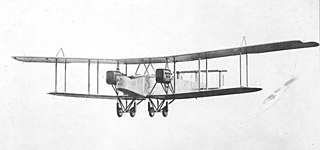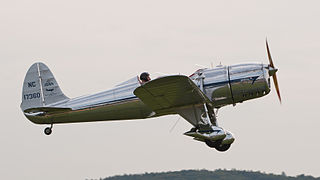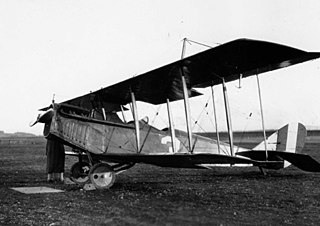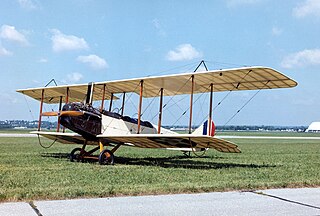
Handley Page Limited was a British aerospace manufacturer. Founded by Frederick Handley Page in 1909, it was the United Kingdom's first publicly traded aircraft manufacturing company. It went into voluntary liquidation and ceased to exist in 1970. The company, based at Radlett Aerodrome in Hertfordshire, was noted for its pioneering role in aviation history and for producing heavy bombers and large airliners.

The Handley Page Type O was a biplane bomber used by Britain during the First World War. When built, the Type O was the largest aircraft that had been built in the UK and one of the largest in the world. There were two main variants, the Handley Page O/100 (H.P.11) and the Handley Page O/400 (H.P.12).

The Handley Page HP.81 Hermes was a civilian airliner designed and produced by the British aircraft manufacturer Handley Page.

The Ryan STs were a series of two seat, low-wing monoplane aircraft built in the United States by the Ryan Aeronautical Company. They were used as sport aircraft, as well as trainers by flying schools and the militaries of several countries.

The Handley Page W.8, W.9 and W.10 were British two- and three-engine medium-range biplane airliners designed and built by Handley Page.

The Consolidated XP4Y Corregidor was an American twin-engined long-range maritime patrol flying boat built by Consolidated Aircraft for the United States Navy. Only one was built and a production order for 200 was cancelled.

The Airco DH.3 was a British bomber aircraft of the First World War. The DH.3 was designed in 1916 as a long-range day bomber by Geoffrey de Havilland, chief designer at the Aircraft Manufacturing Company. It was a large biplane with wide-span three-bay wings, slender fuselage, and a curved rudder. It was powered by two 120 hp (89 kW) Beardmore engines, mounted as pushers between the wings. In addition to tailskid landing gear, two wheels were placed beneath the nose to prevent bumping.

The Thomas-Morse Aircraft Corporation was an American aircraft manufacturer, until it was taken over by the Consolidated Aircraft Corporation in 1929.

The Curtiss XP-22 Hawk was a 1930s American experimental biplane fighter built by Curtiss for evaluation by the United States Army Air Service.

The Curtiss JN-6H was an American biplane trainer aircraft built by Curtiss for the United States Army Air Service during World War I.
The Pomilio BVL-12 was an American experimental single-engine biplane bomber built by the United States Army Engineering Division to the design of Ottorino Pomilio for the United States Army Air Corps after World War I.

The Fairchild 82 and the 34-42 Niska were a family of utility aircraft produced in Canada in the mid-1930s, based on designs by Fairchild Aircraft Ltd. (Canada)'s parent company in the United States.

The Fairchild Super 71 was a Canadian parasol-mounted high-wing monoplane cargo aircraft built by Fairchild Aircraft Ltd. (Canada). The Super 71 was an entirely new design that was one of the first purpose-built civilian bush planes for use in remote and northern locales in Canada.

The Standard H-2 was an early American Army reconnaissance aircraft, ordered in 1916. The H-2 was built by the Standard Aircraft Corporation, and previously known as the Sloane H-2. It was an open-cockpit three-place tractor biplane, powered by a 125 hp (90 kW) Hall-Scott A-5 engine. Only three were built.

The Standard J is a two-seat basic trainer two-bay biplane produced in the United States from 1916 to 1918, powered by a four-cylinder inline Hall-Scott A-7a engine. It was constructed from wood with wire bracing and fabric covering. The J-1 was built as a stopgap to supplement the Curtiss JN-4 in production.

The Standard E-1 was an early American Army fighter aircraft, tested in 1917. It was the only pursuit aircraft manufactured by the United States during World War I. It arrived late in World War I, and as a result saw more use in the months following the Armistice than those preceding it.
The Thomas Brothers T-2 was an American-built biplane which served with the Royal Navy.

The Savoia-Marchetti S.56 was an Italian single-engine biplane flying boat trainer and tourer, built by Savoia-Marchetti.

The Ryan S-C (Sports-Coupe) was an American three-seat cabin monoplane designed and built by the Ryan Aeronautical Company. At least one was impressed into service with the United States Army Air Forces as the L-10.
The New Standard Aircraft Company was an airplane manufacturing company based in the United States. It operated from 1927 until 1931.

















